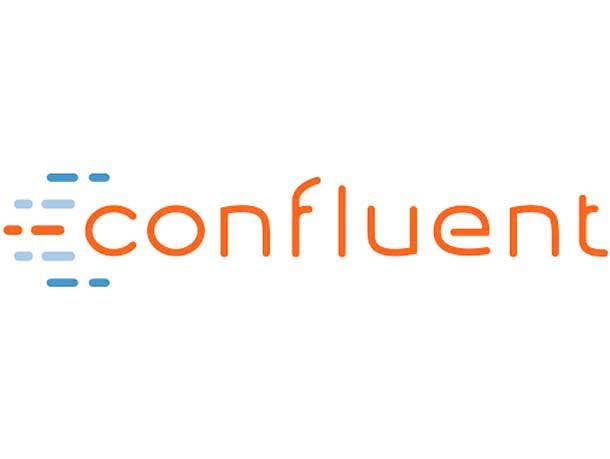Confluent’s IPO: The Details You Need To Know
‘Data in motion’ software developer Confluent filed S-1 and amended S-1 documents with the U.S. Securities and Exchange Commission in recent weeks, providing information about the company’s financial performance, ownership and go-to-market plans in advance of its much-anticipated IPO. Here’s a deep dive into the details.

IPO Imminent
Confluent, one of the most successful big data startups in recent Silicon Valley history, is set to go public with some reports saying the Mountain View, Calif.-based company’s shares could begin trading as early as this Thursday, June 24.
The anticipation for Confluent’s IPO echoes last September’s blockbuster stock debut for Snowflake, which gave the data cloud service company a higher market cap than Dell and VMware.
Confluent filed its S-1 documentation with the U.S. Securities and Exchange Commission on June 1, disclosing for the first time a great deal of information about the company including its financial performance and its ownership. On June 16 the company filed an amended S-1 (S-1/A) with additional information including the number of shares it planned to offer, at what price range and on what stock exchange.
Here’s a look at some of the key details in the Confluent IPO documents.

What Confluent Does
Confluent was co-founded in 2014 by CEO Jay Kreps (pictured above), former CTO Neha Narkhede and Jun Rao. The three previously worked at LinkedIn where in 2011 they developed event streaming software called Kafka – now an open-source Apache Software project – that is the foundation for Confluent’s commercial software.
Confluent targets its real-time data/event streaming products, including the Confluent Platform software and Confluent Cloud cloud-native service, toward real-time data processing tasks – what the company calls “data in motion.”
“We have pioneered a new category of data infrastructure designed to connect all the applications, systems, and data layers of a company around a real-time central nervous system,” Confluent said in its prospectus, included in the S-1 filing.
“This new data infrastructure software has emerged as one of the most strategic parts of the next-generation technology stack and using this stack to harness data in motion is critical to the success of modern companies as they strive to compete and win in the digital-first world,” the company said in the SEC documents.
Confluent’s technology “is designed to act as the nexus of real-time data, from every source, allowing it to stream across the organization and enabling applications to harness it to power real-time customer experiences and data-driven business operations,” the S-1 said. “Our offering can be deployed either as a fully managed, cloud-native SaaS offering available on all major cloud providers or an enterprise-ready, self-managed software offering. Our cloud-native offering works across multi-cloud and hybrid infrastructures, delivering massive scalability, elasticity, security, and global interconnectedness, enabling agile development.”

IPO Plans
Confluent will offer 23,000,000 shares of Class A Common Stock at an initial price between $29.00 and $33.00 per share, according to the amended S-1.
Confluent shares will trade under the symbol “CFLT” on the NASDAQ global select market.
The IPO is expected to raise $713 million, according to Seeking Alpha, and would put Confluent’s market value at $10.0 billion, according to Renaissance Capital. (A Reuters story says Confluent is looking to raise up to $759 million and the IPO would put the company’s market capitalization around $8.3 billion.)
Insiders Coatue Management and Altimeter Capital, under an existing agreement, intend to purchase an aggregate 3.45 million shares of the IPO offering.
Major underwriters are Morgan Stanley, J.P. Morgan, Goldman Sachs & Co. LLC, Bank of America Securities and Citigroup. Other underwriting participants include Barclays, Credit Suisse, Deutsche Bank Securities, UBS Investment Bank, Wells Fargo Securities, Cowen, D.A. Davidson & Co., JMP Securities, KeyBanc Capital Markets and Piper Sandler.

Key Financial Statistics
For the year ended Dec. 21, 2020, Confluent recorded revenue of $236.6 million, up 37 percent from $149.8 million in 2019. Revenue in 2020 included $208.6 million from subscription fees and $27.9 million in service revenue. For 2020 the company’s net loss was $229.8 million compared to a $95.0 net loss in 2019.
For the three months ended March 31, 2021, Confluent reported revenue of $77.0 million, up 51 percent from $50.9 million in the first three months of 2020. The company reported a $44.5 million net loss for the three months ended March 31, 2021, compared to a $33.6 million net loss in the first three months of 2020.
Revenue from the company’s Confluent Platform was $115.8 million in 2019 and $177.2 million in 2020 while revenue from the company’s Confluent Cloud was $14.4 million in 2019 and $31.4 million in 2020.
Confluent had 1,473 employees as of March 31, 2021.

The Market Opportunity
Confluent says it is well-positioned to succeed in the market for data infrastructure software. Specifically, it sees its technology – in both cloud and on-premises environments – for four core Gartner-defined market segments: application infrastructure and middleware, database management systems, data integration and data quality tools, and analytics and business intelligence.
Confluent estimates those market segments total approximately $149 billion. The company currently services approximately $50 billion of that today with that market opportunity growing to $91 billion by 2024, representing a CAGR of 22 percent.

The Customer Base
As of March 31, 2021, Confluent had a total of 2,540 customers, up from 1,050 on March 31, 2020.
Current customers include 136 of the Fortune 500, which contributed approximately 35 percent of the company’s revenue in the quarter ended March 31, 2021.
Confluent had 561 customers with $100,000 or greater in annual recurring revenue (ARR) as of March 31, 2021, up from 374 such customers one year earlier. Of those, 60 customers generated $1 million or greater in ARR compared to 33 such customers one year before.
Customers named in the S-1/A include Goldman Sachs and PNC Financial Services Group in financial services; NASA Jet Propulsion Laboratory and the Department of Veterans Affairs in government; CSAA Insurance Group and Highmark Health Solutions in insurance; Michelin and SunPower in manufacturing and energy; Lumen and Intrado in media, entertainment and communications; Advanced Auto Parts, Disk’s Sporting Goods and Urban Outfitters in retail; ServiceNow in technology; and Avis Budget Group in transportation.
Revenue from outside the U.S. accounted for 34 percent of total revenue in 2020 and 36 percent of total revenue in the first three months of 2021.

The Competition
“ Our principal competitors in the cloud are the well-established public cloud providers such as AWS that generally compete in all of our markets,” Confluent says in the S-1. “These enterprises are developing and have released fully managed data ingestion and data streaming products such as Azure Event Hubs (Microsoft), Amazon Kinesis and Amazon DynamoDB Streams (AWS), and Cloud Pub/Sub and Cloud Dataflow (Google).
“On premise there are a number of vendors with legacy products that have pivoted into this space including TIBCO Streaming, Cloudera Dataflow, RedHat (IBM) AMQ Streams, and Oracle Cloud Infrastructure Streaming.”

Go To Market And The Channel
“Partnerships with the leading cloud providers (AWS, Azure, and GCP), as well as global and regional systems integrators and technology ISVs (IBM, MongoDB, Elastic, and Snowflake) are also central to our sales and marketing strategy,” Confluent said in the S-1. “We believe through these partnerships we will significantly expand the reach of our technology.”

Risk Factors
The Confluent prospectus includes more than 40 pages of risk factors for investors, describing every possible eventuality including failure to achieve profitability, fluctuating financial results, competitive markets, rapid changes in technology and unfavorable economic conditions.
In a sign of the times, Confluent also lists pandemics like COVID-19 as a risk factor. “Health epidemics, including the COVID-19 pandemic, have had, and could in the future have, an adverse impact on our business, operations, and the markets and communities in which we, our partners, and customers operate.”
And the potential downside of cybersecurity threats and incidents is cited as a potential risk. “If we or third parties who we work with experience a security breach, or if the confidentiality, integrity, or availability of our information technology, software, services, communications, or data is compromised, our offering may be perceived as not being secure, our reputation may be harmed, demand for our offering may be reduced, proprietary data and information, including source code, could be exfiltrated, and we may incur significant liabilities,” the company says in the S-1.

Executive Compensation
Co-founder and CEO Jay Kreps earned $350,000 in salary in 2020 plus $21,962,080 in “other compensation” – the latter nearly all attributed to “stock-based compensation” through the sale of 2,640,000 shares of convertible founder stock in July 2020.
CFO Steffan Tomlinson, who joined the company in June 2020, earned total compensation of $14,434,632 million in 2020 including $218,182 in salary (prorated based on an annual salary of $400,000), $14,080,071 in option awards, and $135,927 in a “non-equity incentive plan compensation” cash bonus.
Field operations president Erica Schultz earned total compensation of $751,131 in 2020 including $350,000 in salary and $400,446 in a “non-equity incentive plan compensation” cash bonus.

Principal Stockholders
Who are Confluent’s owners going into the IPO?
Benchmark Capital Partners VIII is the biggest shareholder with more than 35 million shares – 15.3 percent of common stock owned prior to the IPO.
Entities associated with Index Ventures own just shy of 29.8 million shares for 13.0 percent of common stock prior to the IPO. That’s followed by CEO and co-founder Jay Kreps (29.6 million shares or 12.6 percent), co-founder Jun Rao (24.4 million shares or 10.6 percent) and Sequoia Capital (21.4 million share or 9.3 percent).
In addition to Kreps, named executive officers and board members with stakes in the company include co-founder and former CTO Neha Narkhede (3.6 million shares or 1.6 percent), CFO Steffan Tomlinson (3.5 million shares or 1.5 percent), and field operations president Erica Schultz (3.1 million shares or 1.3 percent).
Altogether, current executive officers and directors collectively own 92.3 million shares or 38 percent.